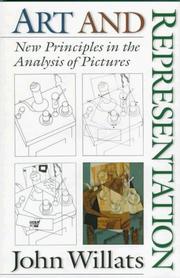| Listing 1 - 3 of 3 |
Sort by
|
Book
ISBN: 9781933492735 9781933492759 1933492759 1933492732 9781781166864 1781166862 Year: 2013 Publisher: Culver City : Design Studio Press,
Abstract | Keywords | Export | Availability | Bookmark
 Loading...
Loading...Choose an application
- Reference Manager
- EndNote
- RefWorks (Direct export to RefWorks)
With the perspective drawing process concisely communicated by Scott Robertson, this book will be an indispensible addition to the library of anyone interested in learning to draw, as well as those teaching others to draw. Early chapters focus on an introduction to the discipline with later chapters providing the knowledge needed to draw more complex forms and subjects.
Drawing --- drawing techniques --- perspectieftekenen --- Perspective --- 641 --- Tekenen --- schetsen --- tekentechnieken --- presentatietekenen --- ontwerpen --- perspectief --- productdesign --- Architectural perspective --- Linear perspective --- Mechanical perspective --- Optics --- Space (Art) --- Space perception --- Projection --- Proportion (Art) --- Shades and shadows --- Technique --- technisch tekenen --- Technical drawing --- perspective [technique] --- design drawings --- ontwerptechnieken
Book
ISBN: 9781933492964 9781933492834 1933492961 193349283X Year: 2014 Publisher: Culver city Design Studio Press
Abstract | Keywords | Export | Availability | Bookmark
 Loading...
Loading...Choose an application
- Reference Manager
- EndNote
- RefWorks (Direct export to RefWorks)
Explains how the human brain interprets the visual world around us, as well as the subject of visually communicating the form of an object in easy to understand lessons through the use of drawings, photography, and more.
Drawing --- Perspective --- Shades and shadows --- Rendering (Computer graphics) --- 641 --- computergraphics --- Rendering --- Tekenen --- tekentechnieken --- presentatietekenen --- ontwerpen --- schetsen --- perspectief --- productdesign --- Computer graphics rendering --- Computer graphics --- Light and shade --- Shade --- Shadows --- Geometry, Descriptive --- Architectural perspective --- Linear perspective --- Mechanical perspective --- Optics --- Space (Art) --- Space perception --- Projection --- Proportion (Art) --- Technique --- technisch tekenen --- renderings [drawings] --- Technical drawing

ISBN: 0691087377 9780691087375 Year: 1997 Publisher: Princeton, NJ ; Chichester Princeton University Press
Abstract | Keywords | Export | Availability | Bookmark
 Loading...
Loading...Choose an application
- Reference Manager
- EndNote
- RefWorks (Direct export to RefWorks)
In Art and Representation, John Willats presents a radically new theory of pictures. To do this, he has developed a precise vocabulary for describing the representational systems in pictures: the ways in which artists, engineers, photographers, mapmakers, and children represent objects. His approach is derived from recent research in visual perception and artificial intelligence, and Willats begins by clarifying the key distinction between the marks in a picture and the features of the scene that these marks represent. The methods he uses are thus closer to those of a modern structural linguist or psycholinguist than to those of an art historian. Using over 150 illustrations, Willats analyzes the representational systems in pictures by artists from a wide variety of periods and cultures. He then relates these systems to the mental processes of picture production, and, displaying an impressive grasp of more than one scholarly discipline, shows how the Greek vase painters, Chinese painters, Giotto, icon painters, Picasso, Paul Klee, and David Hockney have put these systems to work. But this book is not only about what systems artists use but also about why artists from different periods and cultures have used such different systems, and why drawings by young children look so different from those by adults. Willats argues that the representational systems can serve many different functions beyond that of merely providing a convincing illusion. These include the use of anomalous pictorial devices such as inverted perspective, which may be used for expressive reasons or to distance the viewer from the depicted scene by drawing attention to the picture as a painted surface. Willats concludes that art historical changes, and the developmental changes in children's drawings, are not merely arbitrary, nor are they driven by evolutionary forces. Rather, they are determined by the different functions that the representational systems in pictures can serve.
Aesthetics of art --- Gezichtsbedrog --- Illusions d'optique --- Oblique projection --- Optical illusions --- Optics [Psychological ] --- Perceptie [Visuele ] --- Perception [Visual ] --- Perception visuelle --- Perspectief --- Perspective --- Projection [Oblique ] --- Vision--Psychological aspects --- Visual perception --- Visuele perceptie --- Visuele waarneming --- Waarneming [Visuele ] --- Visual perception. --- Perspective. --- Optical illusions. --- Oblique projection. --- Optics, Psychological --- Vision --- Perception --- Visual discrimination --- Architectural perspective --- Linear perspective --- Mechanical perspective --- Optics --- Space (Art) --- Space perception --- Projection --- Proportion (Art) --- Shades and shadows --- Illusions, Optical --- Hallucinations and illusions --- Physiological optics --- Psychological aspects --- art criticism --- philosophy of art
| Listing 1 - 3 of 3 |
Sort by
|

 Search
Search Feedback
Feedback About
About Help
Help News
News